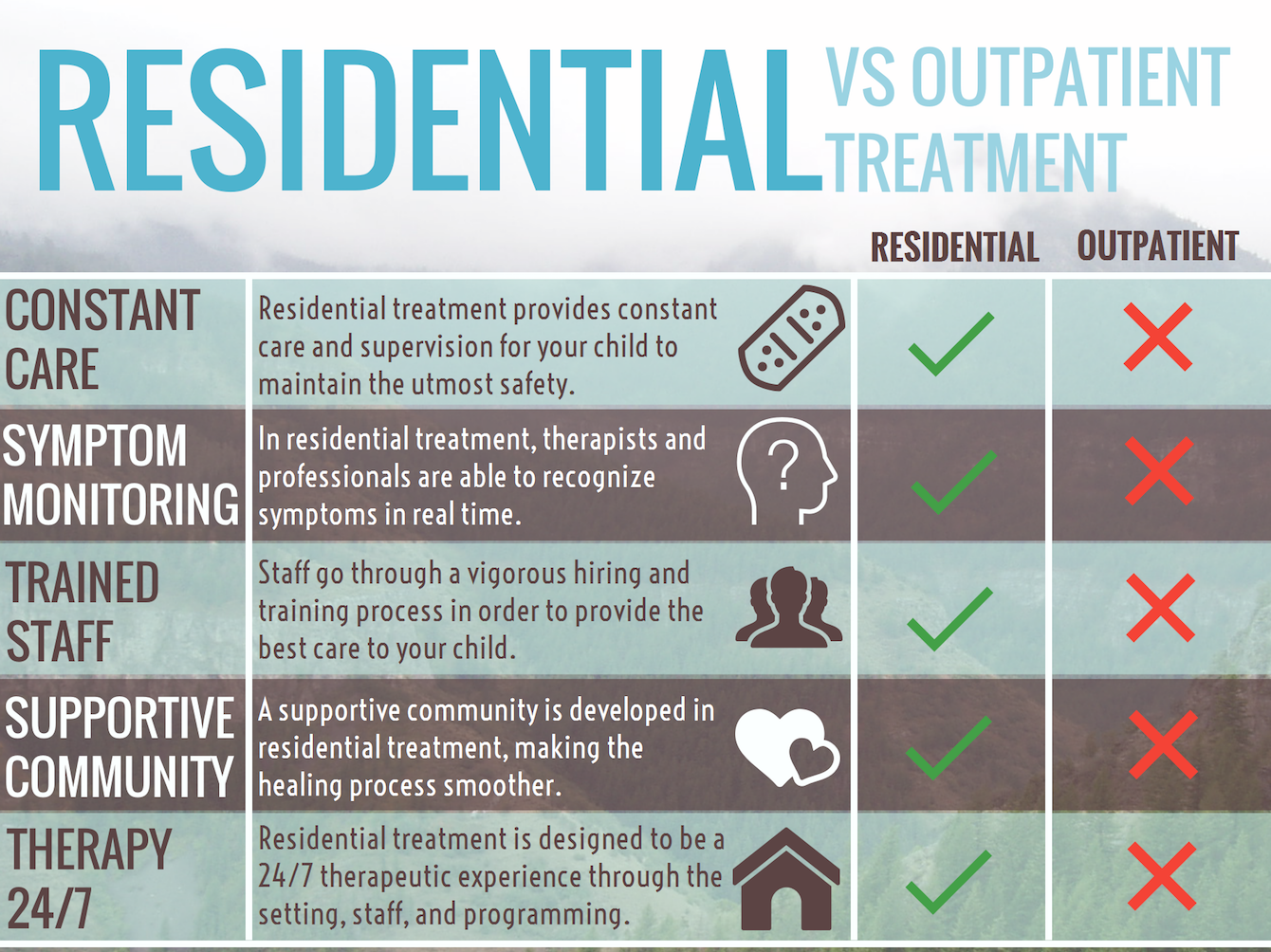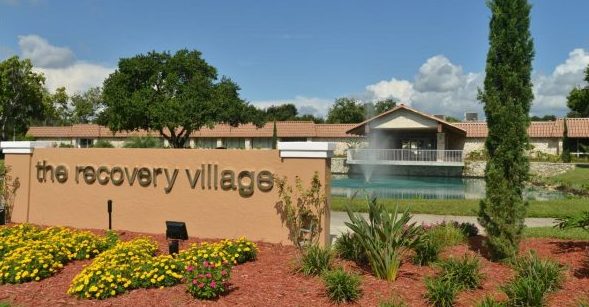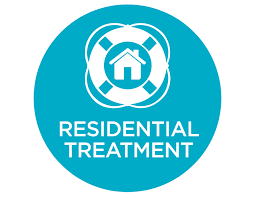When people hear the words “residential treatment” they might think of psychiatric hospitals or rehabs for addiction. While those are both types of residential treatment, there is a lot more to it than that. Residential treatment can be used in a variety of settings and for a variety of issues. In this article, we will explore what residential treatment is, how it works, and why you might consider it for yourself or someone you love.
Contents
Understanding Residential Treatment

The term “residential treatment” can refer to a lot of different things. Here, we are talking about retreat-based therapy, which is a type of intensive outpatient treatment. It is called “retreat-based” because people in treatment typically stay at a residential center during their treatment. These centers can be located in a variety of settings, from hospitals to standalone facilities.
Theory Behind Retreat-based Therapy
There are a few different theories behind retreat-based therapy, but the main one is that the environment can be therapeutic. This means that being in a safe and supportive environment can help people heal. This is why residential treatment centers are typically located in beautiful, natural settings.
Primary Treatment Goals
The main goals of retreat-based therapy are to help people heal from their trauma, learn healthy coping skills, and develop a support system. This type of therapy can be very helpful for people who have been through a lot of trauma or who have not had success with other types of treatment.
History and Development
Retreat-based therapy has been around for centuries. It was first developed in the early 1800s by a doctor named Benjamin Rush. He believed that people with mental illness could be healed by being in a peaceful environment. Retreat-based therapy became more popular in the mid-20th century as a way to treat people with addiction.
Unfolding Retreat-based Therapy

Who Can It Help
Retreat-based therapy can help people with a variety of issues, including addiction, anxiety, depression, trauma, and more. It is most commonly used to treat addiction, but it can be used to treat other mental health conditions as well.
How Does It Work
Retreat-based therapy typically lasts for 30 days, although some programs are shorter or longer. During this time, people in treatment will participate in individual and group therapy, as well as activities like yoga and meditation. They will also have the opportunity to explore nature and connect with other people in treatment.
What to Expect
When you are in retreat-based therapy, you can expect to feel a range of emotions. This is normal, and it is part of the healing process. You may feel scared, sad, angry, or confused at times. You may also feel happy and grateful for the support you are receiving.
Techniques Used in Retreat-based Therapy
There are a few different techniques that are commonly used in retreat-based therapy. These include:
- Cognitive-behavioral therapy (CBT): This is a type of therapy that helps people identify and change negative thought patterns.
- Dialectical behavior therapy (DBT): This is a type of therapy that helps people manage their emotions.
- Acceptance and commitment therapy (ACT): This is a type of therapy that helps people accept their thoughts and feelings.
Evaluating Retreat-based Therapy

There is a lot of research that has been done on retreat-based therapy. This research shows that it can be an effective treatment for a variety of issues, including addiction, anxiety, and depression.
Benefits of Retreat-based Therapy
There are many benefits of retreat-based therapy. These include, it can help you:
- understand your thoughts and feelings.
- learn new skills for managing your emotions.
- develop a support system.
- find meaning in your life.
Common Concerns and Limitations
There are a few concerns and limitations to be aware of with retreat-based therapy. These include:
- The cost: Residential treatment can be expensive, although there are often scholarships or financial assistance available.
- The commitment: Retreat-based therapy requires a commitment of time and energy. This can be difficult for some people.
- The distance: Residential treatment centers are often located far from home, which can make it difficult for some people to get there.
Why Consider It
There are many reasons to consider retreat-based therapy. If you are struggling with an issue like addiction, anxiety, or depression, it can be a very effective treatment. It can also help you develop new skills and find meaning in your life.
Finding a Residential Treatment Center / Retreat Centers

If you are interested in finding a residential treatment center, there are a few things to keep in mind. There are many different types of treatment centers, so you will want to find one that is a good fit for you.
How to Find One
- First, make sure to do your research.
- Second, ask for recommendations from people you trust.
- Finally, make sure to visit the center in person before making a decision.
What To Look Out For
There are a few things to look out for when you are searching for a residential treatment center. First, make sure the center is accredited by a reputable organization. Second, make sure the staff is experienced and qualified. Finally, make sure the center offers the type of treatment that you are looking for.
Red Flags To Avoid
When you are looking for a residential treatment center, there are a few red flags to avoid.
- First, be wary of centers that make promises that seem too good to be true.
- Second, be cautious of centers that require you to sign a contract before you have visited the facility.
- Finally, be aware of centers that try to pressure you into making a decision.
Pursuing Training In Retreat-based Therapy
If you are interested in pursuing training in retreat-based therapy, there are a few things to keep in mind. There are many different types of programs, so you will want to find one that is a good fit for you.
- First, make sure to do your research.
- Second, ask for recommendations from people you trust.
- Finally, make sure to visit the program in person before making a decision.
Hearing From Experts
When it comes to understanding residential treatment, it can be helpful to hear from experts in the field. In this section, we’ll hear from three different experts on residential treatment: Dr. Mark Goldblatt, Dr. Joshua Dienstag, and Dr. Harold Sorensen.
- Dr. Mark Goldblatt is a clinical psychologist and the author of “The Residential Treatment Handbook.” He has over 25 years of experience working in residential treatment centers. In his book, he provides an overview of residential treatment, including its history, how it works, and who it can help.
- Dr. Joshua Dienstag is a psychiatrist and the director of the University of California, San Francisco’s Residential Treatment Program. He has over 15 years of experience working in residential treatment centers. In an article for “The Atlantic,” he provides an overview of residential treatment, including its effectiveness, what to expect, and how to find a good program.
- Dr. Harold Sorensen is a clinical psychologist and the author of “The Residential Treatment Manual.” He has over 30 years of experience working in residential treatment centers. In his book, he provides an overview of residential treatment, including its history, how it works, and who it can help.
All three experts agree that residential treatment can be an effective way to address mental health issues. They all suggest doing your research to find a good program that meets your needs. And they all emphasize the importance of working with a qualified team of professionals.
Case Study
Kate is a 38-year-old woman who has been struggling with depression for many years. She has tried medication and therapy, but she hasn’t been able to find relief. Kate’s doctor suggested that she try the residential treatment.
Kate was hesitant at first, but she decided to give it a try. She found a residential treatment center that specialized in treating depression. During her time there, Kate received individual therapy, group therapy, and medication management. She also had the opportunity to participate in activities like yoga and meditation.
Kate says that her time in the treatment center was difficult, but it was also very helpful. She found that the structure and support she received were vital for her recovery. After completing treatment, Kate felt more hopeful and motivated than she had in years.
Inference
If you or someone you know is struggling with mental illness, residential treatment may be worth considering. This type of treatment can provide you with the structure and support you need to work on your recovery.
Resources
If you’re considering residential treatment, it’s important to do your research and find a reputable center that meets your needs. Here are some resources to help you get on board:
- SAMHSA’s National Helpline
- The National Residential Treatment Locator
- The Association of Recovery in Higher Education
- The National Association of Residential Treatment Centers
Conclusion
Residential treatment can be an incredibly effective way to treat mental illness and addiction. It can provide you with the structure and support you need to work on your recovery. If you’re considering this type of treatment, be sure to do your research and find a reputable center that meets your needs.
A Word From Therapy Mantra
Your mental health — Your psychological, emotional, and social well-being — has an impact on every aspect of your life. Positive mental health essentially allows you to effectively deal with life’s everyday challenges.
At TherapyMantra, we have a team of therapists who provide affordable online therapy to assist you with issues such as depression, anxiety, stress, workplace Issues, addiction, relationship, OCD, LGBTQ, and PTSD. You can book a free therapy or download our free Android or iOS app.


